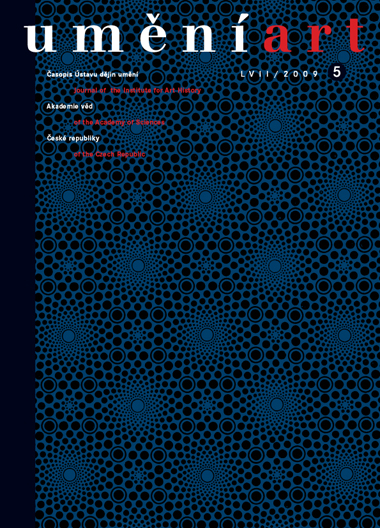Ondřej Faktor
Pozdně gotické nástěnné malby v Křištíně, Štěpánovicích, Lubech a Myslívi na Klatovsku
The late Gothic mural paintings in Křištín, Luby, Štěpánovice and Myslív in the Klatovy Region are linked by their date of origin, around 1500, by their abundant use of stencilled decoration and illusory elements, and, except for the paintings in Myslív, even by the fact that their authorship can be traced to one workshop. In the Church of St Matthew in Křištín, on the eastern wall of the church nave, there is a painting, partly uncovered, of the Assumpta -Virgin Mary clothed with the Sun, set on an illusory console, and some remarkable monumental figures of the prophets and the angels with scrolls on the vault of the presbytery. The prophets were also painted by the same workshop into the jambs of the chancel arch of the Church of St Michael in Štěpánovice. In the direction facing the nave the arch is framed with a painted archivolt with massive crockets and to the left of the arch there are fragments of an illusory ark. The painters also created illusory reredos and the archivolt of the arch in the Church of St Nicholas in Luby. One reredos shows the figure of St Agnes, the second Madonna with Infant Jesus, accompanied on either side by St Apollonia and St Barbara, who are standing on painted consoles. These appear beneath the feet of the holy bishops on the southern wall of the presbytery. A fragment of an illusory tabernacle on the opposite wall was accentuated by a painted tabernacle, from of only the pinnacle and some colourful fragments have survived. A related monument, in the form of a grand tabernacle painting imitating wood-cutting work, fills the northern wall of the presbytery of the Church of the Assumption of the Virgin Mary in Myslív. The tabernacle is filled with tracery, which the painter culminated with an image of the Madonna and Child and angels on the sides. The formal ties of the mural paintings in all four churches point mainly to Nuremberg painting and wood-cutting of the second half of the 15th century and to graphic art from that time (engraving designs of monstrances, etc.). An analysis of style confirmed the dating of the paintings in all four locations to the time just around the year 1500.
Full-text in the Digital Library of the Czech Academy of Sciences:
https://kramerius.lib.cas.cz/uuid/uuid:4e0d32d2-d064-b9ba-177c-47f303778ab5
< back

